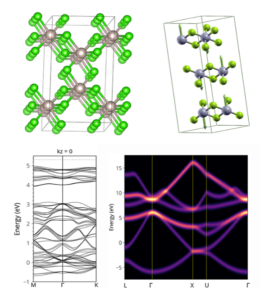My experience getting started with HPC at NUS IT
Pranab Kumar Das, Senior Research Fellow, Singapore Synchrotron Light Source, NUS

I am a researcher at the Singapore Synchrotron Light Source of NUS. I primarily work on experimental projects where we study the electronic band structure of various novel and functional materials by employing Spin- and Angle-Resolved Photoemission Spectroscopy (Spin-ARPES). Alongside experimental observations, we often need theoretical simulations to compare and supplement our results. Previously, I relied on my theoretical colleagues for Density Functional Theory (DFT) based simulations. During the COVID lockdown (when day-to-day experimental work was not possible), I got some time to explore DFT calculations myself. I started mainly with the help of various online tutorials and documentation. I have chosen Quantum Espresso software suite because it is an open-source code and excellent tutorials and resources about it are available online to get started.
Of course, we also needed powerful computing resources to run bandstructure simulations for large crystal systems, especially when incorporating various many-body interactions like electron-electron interaction, spin and orbital coupling, magnetism etc. I had no prior experience with high-performance computing. Then I found out that our NUS IT offers generous computing resources for anyone at NUS. With various resources available in our NUS IT help pages and on the broader internet, I managed to set up my workflow. Specific setup-related support has been provided by the NUS IT via email and nTouch whenever I stumbled into issues. Currently, I managed to run several calculations for the projects we are working on. Without the help of NUS IT and the open-source community, I could not have learned all these. Certainly, I will still need help from our theory colleagues, but now I can better communicate with them with the knowledge I have learned recently. I decided to document my learning process and collect various resources in a GitHub repository: https://github.com/pranabdas/espresso. You will find basics about how to set up Quantum Espresso (QE), useful Linux/Unix commands, compile QE at HPC, visualize crystal structures and build supercells using VESTA and XCrysdens, perform self-consistent field, lattice relaxation calculations, including Hubbard U, Spin-Orbit coupling and magnetism in your calculation, find out Density of States (DOS) or projected DOS, make plots using Python Matplotlib, and other tips and tricks that I found helpful. I am sharing my tutorial notes hoping that it might help someone like me new in this field to get started. If you are reading this and have expertise in this area, I welcome your suggestions and contributions. I look forward to learning more about DFT and High-Performance Computing from you and the community.
You can reach me directly via email: das@nus.edu.sg or through the Research Computing team at NUS IT (nusit-hpc@nus.edu.sg). Thank you.
